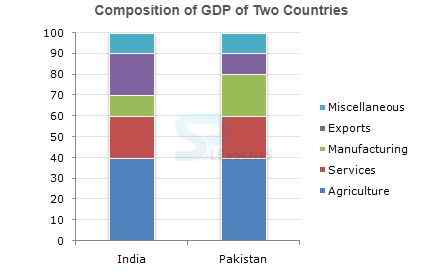 Introduction
Introduction
What is Quantitative Aptitude test?
Quantitative Aptitude is one of the prominent competitive aptitude subjects which evaluates numerical ability and problem solving skills of candidates. This test forms the major part of a number of important entrance and recruitment exams for different fields. The Quantitative Aptitude section primarily has questions related to the Simplification, Numbering Series, and Compound Interest, etc.
A candidate with quantitative aptitude knowledge will be in a better position to analyse and make sense of the given data. Quantitative Aptitude knowledge is an important measure for a prospective business executive's abilities.
The article SSC CPO Quantitative Aptitude Quiz 16 provides Quantitative Aptitude questions with answers useful to the candidates preparing for Competitive exams, Entrance exams, Interviews etc. The article SSC CPO Quantitative Aptitude Quiz 16 will assist the students to know the expected questions from Quantitative Aptitude.
 Quiz
Quiz
Directions: The following bar chart shows the composition of the GDP two countries (India and Pakistan).
1. If the total GDP of Pakistan is Rs. 10,000 crore, then a GDP accounted for by Manufacturing is ?
- A. Rs.200 crore
B. Rs.600 crore
C. Rs.2,000 crore
D. Rs.6,000 crore
Hint: The green which indicates manufacturing and it is 60 - 80 and its difference is 20%. So 20% of 100000 = 2000.
2. What fraction of India's GDP is accounted for by Services?
- A. ([latex]\frac{6}{33 }[/latex])th
B. ([latex]\frac{1}{5 }[/latex])th
C. ([latex]\frac{2}{3}[/latex])rd
D. None of these
- A. Rs.18,500 crore
B. Rs.18,000 crore
C. Rs.21,000 crore
D. Rs.15,000 crore
- A. India
B. Pakistan
C. Both spend equal amounts
D. Cannot be determined
- A. 100 %
B. 200 %
C. 133.33 %
D. None of these
1. A started a business with Rs.21,000 and is joined afterwards by B with Rs.36,000. After how many months did B join if the profits at the end of the year are divided equally?
- A. 4
B. 5
C. 6
D. 7
- A. Rs 690
B. Rs 790
C. Rs 890
D. Rs 990
- A. Rs 2300
B. Rs 2400
C. Rs 2500
D. None of above
- A. Rs. 2000
B. Rs. 3000
C. Rs. 4000
D. Rs. 5000
- A. Rs 7000
B. Rs 6000
C. Rs 5000
D. Rs 4000
1. A sum of Rs. 1360 has been divided among A, B and C such that A gets [latex]\frac{2}{3}[/latex] of what B gets and B gets [latex]\frac{1}{4}[/latex] of what C gets. B's share is:
- A. Rs. 120
B. Rs. 160
C. Rs. 240
D. Rs. 300
- A. 2 hours
B. 3 hours
C. 4 hours
D. 5 hours
- A. 8.5 km/hr
B. 9 km/hr
C. 10 km/hr
D. 12.5 km/hr
- A. 3 km/hr
B. 5 km/hr
C. 8 km/hr
D. 9 km/hr
- 2.4 km
B. 2.5 km
C. 3 km
D. 3.6 km






